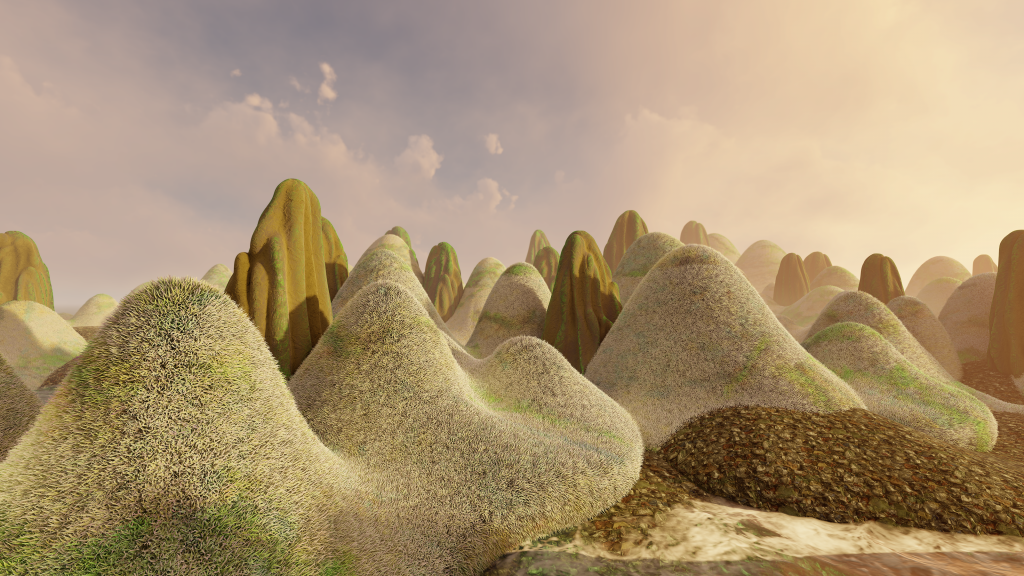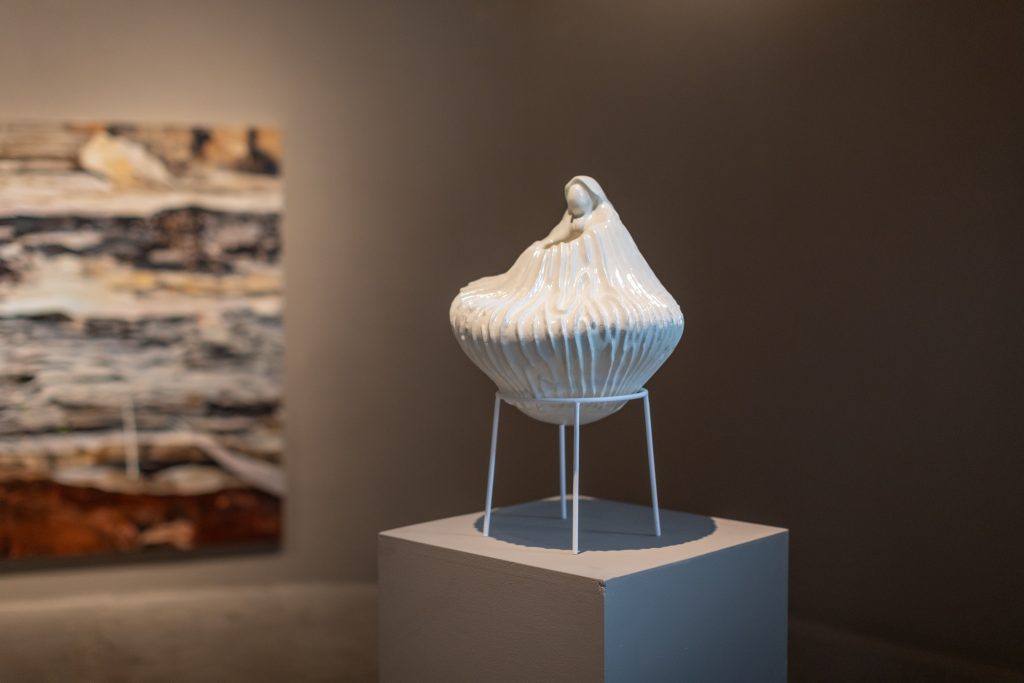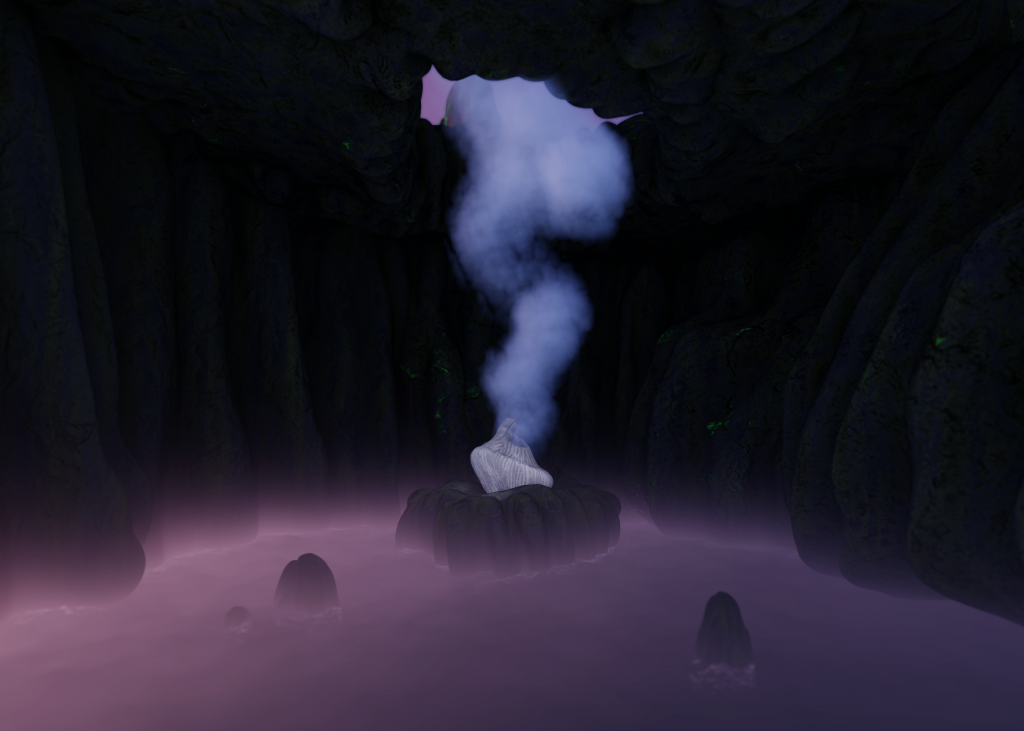Soft Aesthetics, Hard Questions: A Conversation with Bianca Carague
At Art Rotterdam’s Prospects section, Bianca Carague (b.1995, The Philippines) presents the sculpture, Ilog Maria Vessel (2023) and video Maria Islands (2023) from her immersive world Maria Islands (2023), a speculative future where the Philippines expands its territory using imported plastic waste. She creates immersive worlds that feel both serene and unsettling. Her work is dystopian in concept, yet visually soft and spiritual. “Even when I work with critical subjects, like climate change, power imbalance, or mental health, there’s always this softness in how I approach it. That’s just who I am,” she explains

What is the common thread in your practice?
Bianca’s work spans different media - gaming environments, video, sculpture- yet the core remains the same: storytelling through immersive, speculative futures. Her artistic journey began in furniture and interior design in the Philippines, but her desire to create socially engaged work led her to study Social Design at Design Academy Eindhoven. “I started my Master’s thinking I’d be designing things that help people and solve problems. But I quickly realised design isn’t always about fixing things, it can also be about questioning and reshaping narratives,” she says.
Her early projects focused on digital storytelling and interactive environments, but over time, she also felt the urge to bring those fictional worlds into a more tangible, physical dimension. “I think starting with digital made me crave something physical. First, I wanted to touch things. Then, I wanted to smell them. I kept expanding beyond the screen.”
How did you start exploring digital worlds?
During the COVID-19 pandemic, as lockdowns pushed interactions online, Bianca became fascinated with gaming as a space for mental health, emotional care, and spiritual connection. “I had no business playing Minecraft,” she laughs. “But I thought, what if therapy could happen inside a video game? What would that even look like?”
What started as an experiment quickly grew into something much larger and now is a virtual landscape of 3M+ sqm. She built a Minecraft server, Bump Galaxy (2020-2023), for mental health where different environments emerged in response to conversations with players and professionals. “There is a meditation forest where you could plant a tree and watch it grow while meditating, an underwater temple for hypnotherapy, even a snowfield with floating questions about love and relationships.”
While the project began as a response to practical constraints and isolation, it ultimately reshaped the way Bianca thinks about how digital worlds can influence human experience, a perspective that continues to inform her work today.

Your work is very participatory, not just in creation, but also in how it’s experienced. How do you approach that?
“I consider myself an introvert, but I love connecting with people through my work,” she says. Bianca’s work is constantly shaped by the people who interact with it. Whether through community-driven storytelling, gaming collaborations, or audience participation.
One of her participatory projects, Gen C: Children of 2050 (2022), invited young audiences to imagine future societies shaped by environmental change. Over three months, Bianca incorporated ideas from visitors into her work, evolving the exhibition through interactive workshops. In one session, participants entered a virtual simulation where they had to find creative ways to survive in an ocean full of plastic. Most of them immediately thought, 'We could turn it into islands!' That idea stuck with her and later became the foundation for Maria Islands. She first presented Maria Islands in 2023 at Nieuwe Instituut in Rotterdam.
When she decided to bring the project to the Philippines, it felt like a natural continuation, as it aligned with real issues the country struggles with. In Manila, she collaborated with fellow artist and studiomate Erik Peters, as well as other Filipino artists, to further develop its world and narrative in two more exhibitions
This participatory ethos extends beyond storytelling into multi-sensory experiences. “For Maria Islands, I also created a fragrance that mimicked what these plastic islands might smell like: ocean, salt, soil, burning tar, and artificial flowers. It was definitely interesting!,” she laughs.
Rather than simply observing, audiences become co-creators of the speculative futures she envisions. “Often, solutions are dictated from the top down. The people most affected by these issues rarely get a say in shaping their own futures. That’s where imagination becomes powerful.”

What will you be showing at Art Rotterdam?
At Prospects, Bianca presents a sculpture and a video from Maria Islands (2023), a project that reflects her personal connection between the Philippines and the Netherlands while addressing global power imbalances in waste distribution. “I’m from the Philippines, but I’ve spent years studying and working in the Netherlands. I wanted to create a project that resonates between these two places, not just personally, but in how they are connected through systems of consumption and waste.”
The video, Maria Islands (2023), speculates on a future where the Philippines expands its territory using imported plastic waste, referencing the real-world practice of Western nations offloading their waste onto the Global South. The Philippines, one of the largest recipients of plastic waste - much of it from the Netherlands - lacks the infrastructure to process the volumes it receives. "It makes no sense because, at the end of the day, waste doesn’t disappear, it becomes everyone’s problem. But in these global power structures, it’s the wealthier nations that get to dictate who bears that burden."
Rather than simply exposing this imbalance, Maria Islands flips the power dynamic, imagining a future in a video where plastic becomes the foundation for nation-building. "What if, instead of being a symbol of environmental collapse, plastic waste became a resource? What if the Philippines, rather than being forced to absorb waste it can’t process, turned that into power, literally reshaping its territory, its economy, and its future?"
The sculpture, Ilog Maria Vessel (2023), brings this imagined world into physical form, allowing visitors to tangibly engage with her speculative landscape. The Mondrian Fund grant was instrumental in developing Maria Islands. “The grant gave me the opportunity to explore the geopolitical, cultural, and spiritual dimensions of what this speculative future could mean in greater depth.”
Written by Emily Van Driessen


